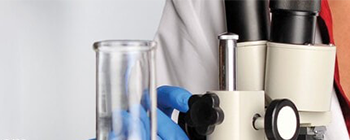Learn More
CD90 (Thy-1) Monoclonal Antibody (eBio5E10 (5E10)), PE, eBioscience™, Invitrogen™
Mouse Monoclonal Antibody
Supplier: Invitrogen 12090941
Description
Description: The eBio5E10 monoclonal antibody reacts with human CD90, also known as Thy-1 (thymus cell antigen-1). CD90 is a 25-35 kD receptor expressed on thymocytes, CD34+ prothymocytes, hematopoietic stem cells, neurons, a small subset of human fetal liver cells, cord blood cells, and bone marrow cells. CD90 is expressed on a subset of immature, CD34+ cells and a distinct subset of mature CD34- cells that are CD3+CD4+. The CD90+CD34+ population is enriched for cells capable of long-term culture. CD90 is involved in regulation of adhesion and signal transduction by T cells. Applications Reported: This eBio5E10 (5E10) antibody has been reported for use in flow cytometric analysis. Applications Tested: This eBio5E10 (5E10) antibody has been pre-titrated and tested by flow cytometric analysis of human erythroleukemia (HEL) cells. This can be used at 5 μL (0.25 μg) per test. A test is defined as the amount (μg) of antibody that will stain a cell sample in a final volume of 100 μL. Cell number should be determined empirically but can range from 10^5 to 10^8 cells/test. Excitation: 488-561 nm; Emission: 578 nm; Laser: Blue Laser, Green Laser, Yellow-Green Laser. Filtration: 0.2 μm post-manufacturing filtered.
CD90 (Thy 1) antigen is a GPI linked glycoprotein member of the Immunoglobulin super family. CD90 is expressed in murine T cells, thymocytes, neural cells, Kupffer's cells and fibroblasts. CD90 may play a role in cell-cell or cell-ligand interactions during synaptogenesis and other events in the brain. CD90 can be used as a marker for a variety of stem cells and for the axonal processes of mature neurons. Structural study of CD90 led to the foundation of the Immunoglobulin superfamily, of which it is the smallest member, and led to the first biochemical description and characterization of a vertebrate GPI anchor. Diseases associated with CD90 dysfunction include nasopharyngeal carcinoma and thymoma.Specifications
| CD90 (Thy-1) | |
| Monoclonal | |
| 5 μL/Test | |
| PBS with 0.2% BSA and 0.09% sodium azide; pH 7.2 | |
| P04216 | |
| Thy1 | |
| Affinity chromatography | |
| RUO | |
| 7070 | |
| 4° C, store in dark, DO NOT FREEZE! | |
| Liquid |
| Flow Cytometry | |
| eBio5E10 (5E10) | |
| PE | |
| Thy1 | |
| CD7; CD90; CDw90; FLJ33325; membrane glycoprotein; T25; Thy 1.2; THY1; Thy-1; Thy-1 antigen; Thy-1 cell surface antigen; thy-1 glycoprotein; thy-1 membrane glycoprotein; Thy-1 protein; Thy-1 T-cell antigen; Thy1.1; Thy1.2; Thy-1.2; thymus cell antigen 1, theta; Thymus cell surface antigen | |
| Mouse | |
| 25 Tests | |
| Primary | |
| Human | |
| Antibody | |
| IgG1 κ |
For Research Use Only.



-Flow-20170216130641.jpg-250.jpg)